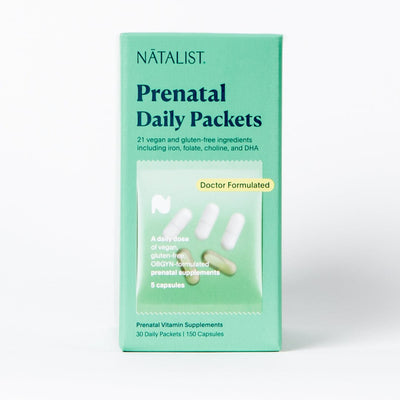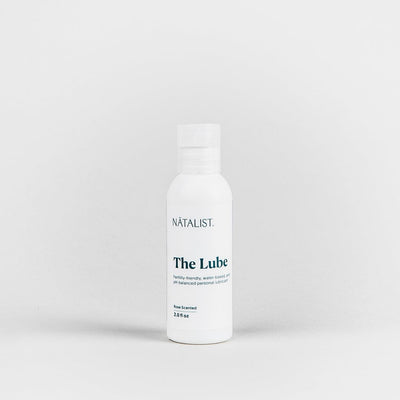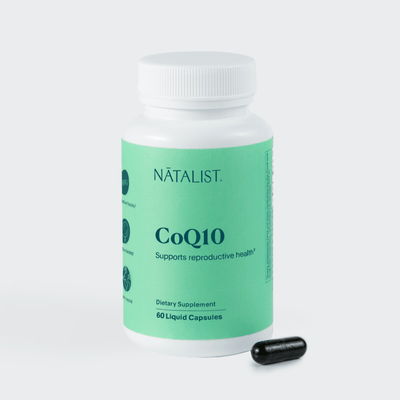Colostrum vs Breast Milk: What Parents Should Know

Introduction to Colostrum and Breast Milk
Breastfeeding is an extremely effective way to ensure infant health and survival. [1] Breast milk is the ideal food for infants, providing many antibodies and nutrients that protect against illness and fuel infant development. [1] Not only is breast milk full of nutrients but the first milk that is produced by the body during pregnancy, colostrum, is packed full of even more nutrients and antibodies. [2-3]
What Is Colostrum?
Colostrum is the first form of breastmilk released by the mammary glands towards the end of pregnancy or after giving birth. [2-3] Colostrum can differ slightly from typical breastmilk in appearance and nutritional makeup. It’s normal for colostrum to have a deep yellow or orange color. It may also appear white, clear, or creamy. [2] It’s typically a thicker consistency and may even contain faint traces of blood. The production of colostrum begins as early as 12 weeks gestation. [2-3]
Key Benefits of Colostrum
Colostrum is made up of all the vital nutrients a child needs in the first few days of life. Colostrum is high in protein, vitamins, minerals, and antibodies that can bolster a baby’s immune system. Other colostrum benefits include [2-3]:
- Establishes a healthy gut
- Offers ideal nutrition for a newborn
- Easy to digest
- Helps prevent low blood sugar
- Has a laxative effect, aiding in the release of meconium
- Lessens the chance of jaundice
- Strengthens the immune system
The Transition to Breast Milk
The body is incredibly in tune with the needs of a baby while lactating. This is reflected in the changes to breast milk volume and nutritional makeup. Colostrum is the first milk produced- often a small amount but incredibly nutritious. [2-3] This is because newborns can’t consume a high volume of milk soon after delivery, but are still in need of vitamins, minerals, and antibodies. Once a baby’s stomach expands and they can consume a higher volume of milk, the body will begin to produce a higher volume of milk that is less concentrated, increasing milk flow. [2-3]
The Shift from Colostrum to Mature Milk
Colostrum is produced by the body during pregnancy and for a few days after giving birth. About four days after delivery, colostrum will shift to transitional breast milk, which will eventually become mature milk about two weeks after giving birth. [2] The shift from colostrum to transitional milk is sometimes known as milk “coming in.” The breasts will feel more firm, tender, and full. This is the first sign that someone’s milk supply has increased to meet the nutritional demands of a newborn. [2] While mature milk will begin after about two weeks, traces of colostrum are often still present in breast milk for up to six weeks. [2-3]
Advantages of Breast Milk
Even though colostrum has been coined “liquid gold” for all of its important nutritional properties, this doesn’t mean that mature breast milk is any less important or nutritious. It’s strongly encouraged by many public health organizations, including The American Academy of Pediatrics (AAP) and the World Health Organization (WHO), that parents attempt to exclusively breastfeed for the first six months of life, and continue to breastfeed alongside supplemental foods for at least two years after childbirth. [1,4] There are many benefits, including [1,5]:
- Breastfed children perform better on intelligence tests
- Breastfed children are less likely to be overweight or obese
- Breastfed children are less prone to diabetes later in life
- Parents who breastfeed are at a reduced risk of breast and ovarian cancers.
- Breast milk is the best course of nutrition for most babies
- Breast milk will continue to adapt to meet the child’s needs, during illness or for general development
- Breastfed babies are less likely to have ear infections and stomach bugs
- Breast milk continues to support a strong immune system
Similar to the benefits of prenatal vitamins for women, postnatal vitamins can support nutritional goals for you and baby!
Challenges and Solutions in Early Breastfeeding
Even though there are many benefits to breastfeeding, there are also some common challenges that new mothers and parents face. Breastfeeding doesn’t come easy for everyone, and it’s normal to experience some bumps in the road. Some challenges include [6]:
- Sore or cracked nipples
- Low milk supply or oversupply
- Cluster feeding
- Emotional and physical fatigue- learn more about breastfeeding fatigue
- Engorged, painful breasts
- Plugged duct
- Infections
- Postpartum depression
And others. If you are having difficulty breastfeeding, you should speak with a healthcare provider. A specialist such as a lactation consultant may be able to help identify some solutions that can make the process a bit easier, including:
- New feeding techniques
- Adjusting baby’s position when breastfeeding
- Nipple balm, ointments, and rest
- Gentle massage
- Warm or cold compresses
- Pumping excess milk
- Supplementing with formula
- Medications
- Rest and self-care
- Therapy
While many organizations and providers do recommend breastfeeding for as long as you can, it’s also important to listen to your body’s needs. Formula can be a great substitution if you are unable or choose not to breastfeed. The most important thing is keeping your baby happy and healthy. Read breastfeeding vs formula feeding for more information.
Embracing the Breastfeeding Journey
Breastfeeding is a beautiful opportunity to bond with your baby. There are also many benefits to breastfeeding for both the parent and the infant, such as lowered risk of cancer, diabetes, and obesity, and encouraging adequate nutrition and development for your baby. [1-2] Colostrum and mature milk both provide many nutritional benefits and support a newborn’s immune system. It’s important to keep in mind that the postpartum life can be very different from person to person, just as everyone’s pregnancy journey is unique. If you run into any difficulties, concerns, or questions, don’t hesitate to reach out to a healthcare provider. At the end of the day, you should prioritize whatever helps you and your baby feel the best.
Natalist's Commitment to New Parents
The path to parenthood can be a long and bumpy one. At Natalist, we’re dedicated to making the journey a little bit easier by providing high-quality products you can trust. Whether you’re looking for nutritional vitamins and supplements, a useful breastfeeding kit , or you’re looking to test important reproductive hormones, we’ve got you covered. Learn more about postpartum life on the Natalist blog.
References:
- Breastfeeding. World Health Organization. Accessed December 2023. https://www.who.int/health-topics/breastfeeding#tab=tab_1
- Colostrum. Cleveland Clinic. February 2022. https://my.clevelandclinic.org/health/body/22434-colostrum
- Jozsa F, Thistle J. Anatomy, Colostrum. [Updated 2023 Feb 5]. In: StatPearls [Internet]. Treasure Island (FL): StatPearls Publishing; 2023 Jan-. Available from: https://www.ncbi.nlm.nih.gov/books/NBK513256/
- Joan Younger Meek, Lawrence Noble, Section on Breastfeeding; Policy Statement: Breastfeeding and the Use of Human Milk. Pediatrics July 2022; 150 (1): e2022057988. 10.1542/peds.2022-057988
- Breastfeeding Benefits Both Baby and Mom. CDC. September 2023. https://www.cdc.gov/nccdphp/dnpao/features/breastfeeding-benefits/index.html
- Common Breastfeeding Challenges. WIC Breastfeeding Support. US Department of Agriculture. Accessed December 2023. https://wicbreastfeeding.fns.usda.gov/common-breastfeeding-challenges
Dr. Kenosha Gleaton is board-certified in gynecology and obstetrics and is the Medical Advisor of Natalist. She received her MD from MUSC and completed her residency at Carolinas Medical Center in Charlotte, NC.
Dr. Gleaton is passionate about women, health equity, and mentoring. She is the CEO of The EpiCentre, an OBGYN spa-like practice, and is a Clinical faculty member of Charleston Southern University. She is also a member of the American College of Obstetrics & Gynecology, the American Association of Gynecologic Laparoscopists, and the American Association of Professional Women.



















